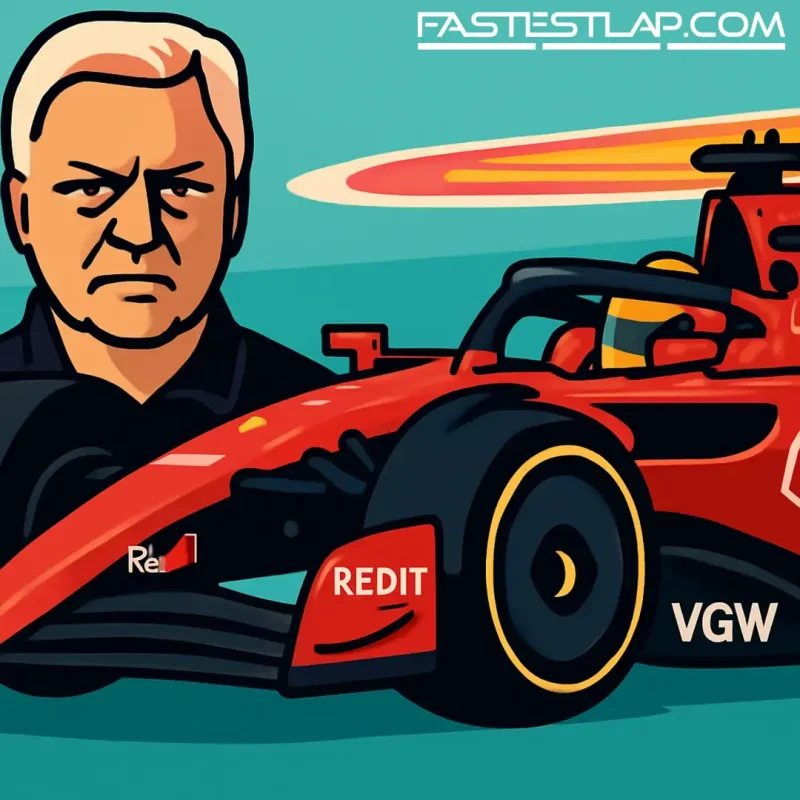Inside Cadillac’s quiet dress rehearsal with Ferrari before its 2026 F1 debut
Cadillac has been keeping its powder dry, but behind the scenes the incoming 2026 entrant has already begun the unglamorous — and crucial — work of building a race team that can function under pressure. The twist? Much of that prep is happening shoulder-to-shoulder with Ferrari.
With no two-year-old car of its own to run under F1’s Testing of Previous Cars provisions, Cadillac has embedded staff into Ferrari’s TPC days to accelerate its learning curve ahead of next year’s rules reset. Executive engineering consultant Pat Symonds outlined the approach in Austin, where Cadillac held a low-key pre-event briefing during the United States Grand Prix weekend.
“We can’t actually run the car ourselves,” Symonds said. “So there are two sessions, one of which has already occurred, and there’s one more coming up. It’s really much more about team-building. We’ve now got our full complement of mechanics and race engineers, so getting them together and working with the Ferrari guys, who we will be working with.”
It’s not about lap times. It’s about repetition. Bleeding hydraulics the way Ferrari’s system wants it. Understanding refuelling routines. Practicing garage choreography until the muscle memory sticks. As team boss Graeme Lowdon put it recently, the exact car is almost irrelevant — the point is to become a team that moves as one.
There is, of course, a competitive spine to all this. Cadillac will enter 2026 as F1’s 11th team amid wholesale power unit and aero changes, starting life as a Ferrari customer while General Motors’ in-house power unit program ramps up. But don’t confuse “customer” with copycat. Symonds was clear: this isn’t a Haas-style model.
“We’re not doing it in the model like some of our competitors,” he said. “We’re taking the engine, we’re taking the gearbox cassette — the change gears — but the whole of the gearbox carrier, the whole of the rear suspension, front suspension indeed… we’re not buying those. We are designing from scratch. I’m a great believer in being in charge of your own destiny, and I think, if you are a customer team, to me, that’s not the way to win the World Championship.”
That’s a bold line in the sand for a squad that hasn’t turned a wheel yet. It also creates a packaging puzzle: design your own architecture now, but fit a power unit you don’t physically have. On that, Symonds said Ferrari has been an open book — and refreshingly pragmatic about the late details that always arrive late.
“They’ve been very accommodating,” he said. “It’s not the major things — a simple example is some of the wiring around the engine, some of the position of the hydraulic manifold was only finalised a couple of weeks ago. So you may have made some hydraulic pipes that you then have to change. All the major stuff is quite early. They’ve just been amazingly helpful. They really seem to be on board with our project.”
Cadillac has already built a non-race prototype chassis to start learning, a mule of sorts created before final PU-installation specs landed. That’s normal in a year before a regulation reset; what matters is that the big interfaces are right and the late tweaks are manageable. The Ferrari days help there, too — not because the 2024 Ferrari teaches you how to build a 2026 car, but because it forces a new group of people to solve real problems together. That’s how you close the operational gap to teams with a decade of shared scars.
If the tone in Austin felt calm, that’s by design. Cadillac is clearly resisting the temptation to borrow too much hardware and too many habits. It wants Ferrari’s horsepower and insight, but not Ferrari’s rear suspension. It wants the data, then the independence. It’s a slower, harder road — and the right one if you’re serious about winning something bigger than a midfield dogfight.
The two remaining milestones ahead of winter are straightforward: complete the second embedded TPC stint with Ferrari, then keep iterating the prototype hardware as the 2026 installation picture locks. After that, it’s over to the wind tunnel, the simulator, and the unavoidably stressful first fire-up.
For now, Cadillac seems to have its eyes open. The hard laps will come later. Today it’s spanners, software and systems — the bits you don’t see on TV that, more often than not, decide what you do.




